Winter has finally arrived here with frost most nights. and days noticeably colder, as low as 2 C 36 F maximum. This is okay! Much better to have cold now than in the spring, and all being well you have harvests of root vegetables stored for long-term use.
I explain other jobs of the season below, and one of them is not sowing seeds which can wait at least another six weeks, apart from exhibition onions. The old saying is “Sow seeds in January and you won’t have to eat anything”. More likely, you are buying seeds now, and check this link for my tips on seed companies and varieties which I have found to grow well.
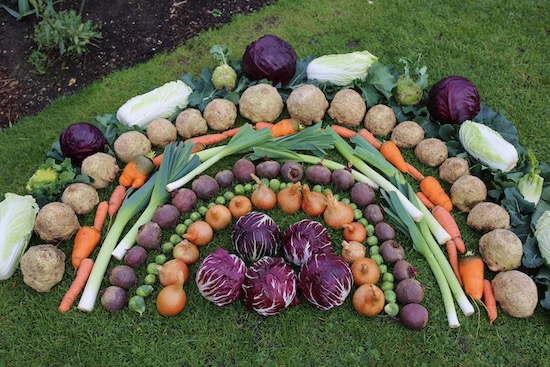
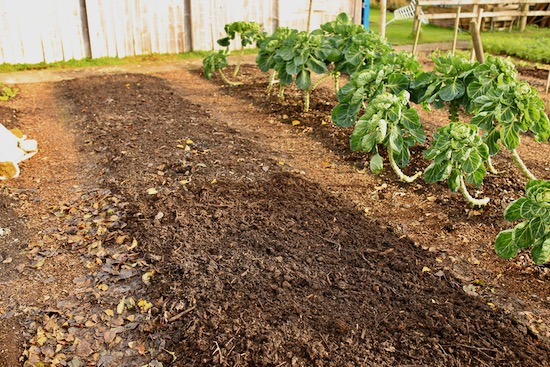

Compost
I am heartened to see the growing interest in making compost, and see this post where I share my experience of many decades. There is a lot to learn about creating good compost, yet also once you’ve grasped the principles, results can be really exciting.
I feel safer using home-made compost since I know all of its ingredients, and nowadays I am nervous of animal manures because of pyralid weedkiller, and likewise some municipal/green waste composts may contain these, from weedkiller sprayed on lawns. Scroll to the bottom of this page for more information.
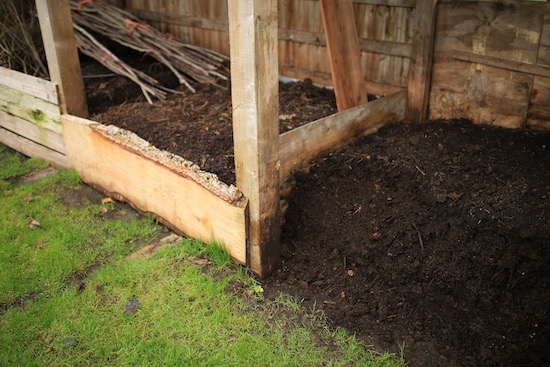
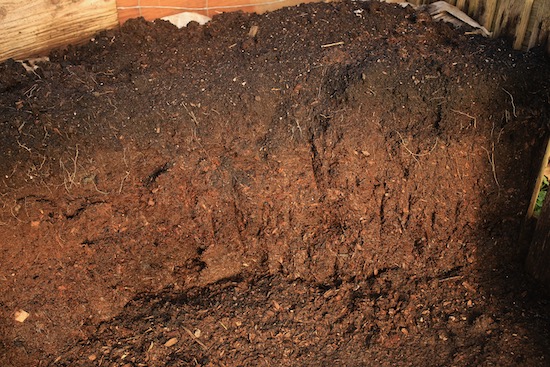

Wooden sides for beds, or not
Almost all my beds have no wooden sides and this works so well, to economise on materials and space needed. Plus there are generally fewer slugs. Therefore I have been keen for a while to remove the sides from my two trial beds right in the middle of the garden!
The planks are made of oak so they had lasted very well, nine years in fact. When removing them I found a fair few slugs, and then set to digging the big bed, and incorporating compost. Following that we spread the same amount of compost on the no dig bed, and I smoothed the sides with my feet.
When making new beds, wooden sides are extremely useful and I recommend them, to contain the compost in a bed shape. After a few weeks or months or even years, you can then remove the sides. There are no rules to this and in some situations, wooden sites are very useful. Here I am encouraging you to think about how necessary they are, and how you might save time and money by not using them generally, see my video about this subject.
This years harvest results from these two trial beds came out once again 15% in favour of the No-Dig bed. I take heart from the plentiful amount of vegetables in 2020 from the single no dig bed of 1.5 x 5 m or 5 x 16′. Since April, we gathered 113.2 kilograms of kitchen ready vegetables.
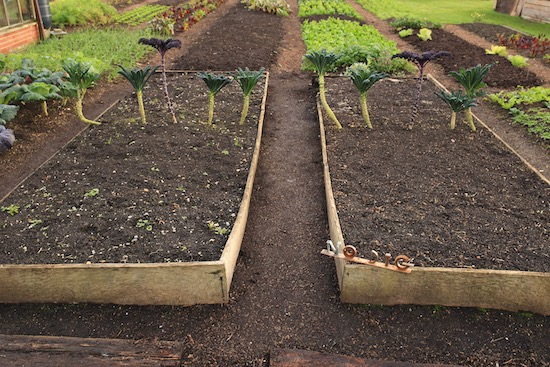

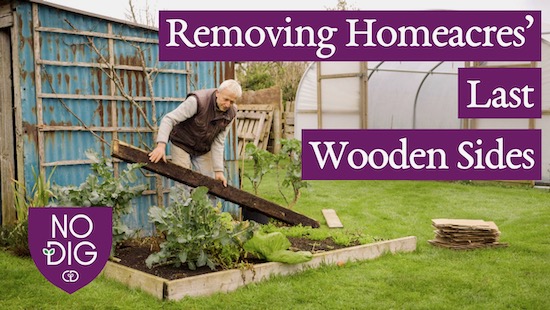
Path mulches
We apply just thin mulches of preferably decomposed wood chips to all paths, before winter. The wood stimulates fungal action in the soil below, which is possibly one reason why there are so few weeds in the paths, and for sure we pull any if we see them. I do not use any cardboard now on existing paths, and there is no membrane in my garden, it’s horrible stuff!
Discover more about laying out beds and paths in module 3 of my first online course.
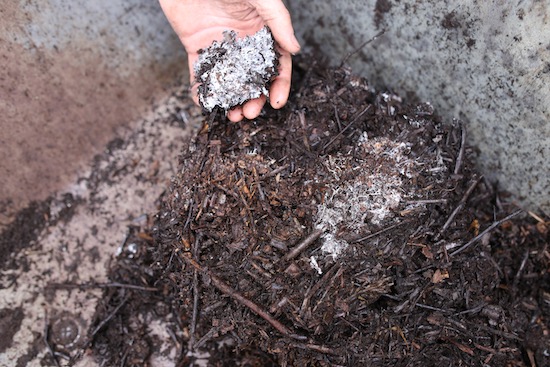
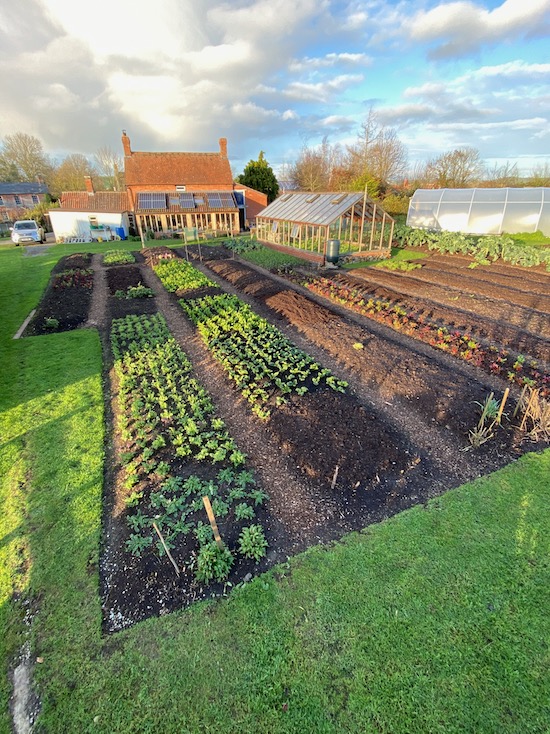
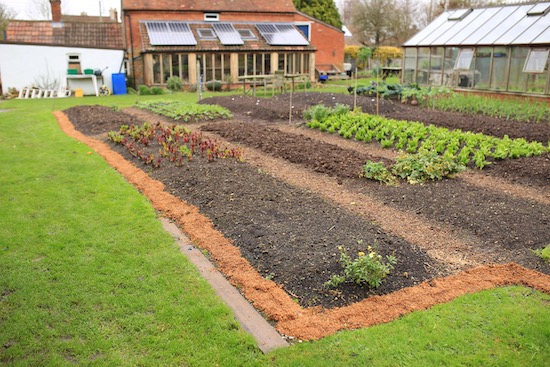
Winter greens
The longer that winter goes on, the more I feel like eating green vegetables, and the ones below are great examples of healthy winter food. It’s such a pity that Brussels sprouts have a reputation for being bitter, however we find that roasting them gives a delicious result.
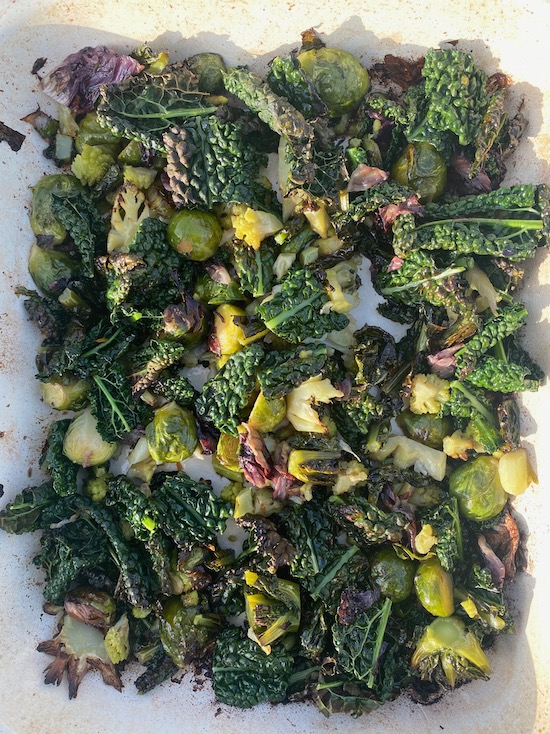

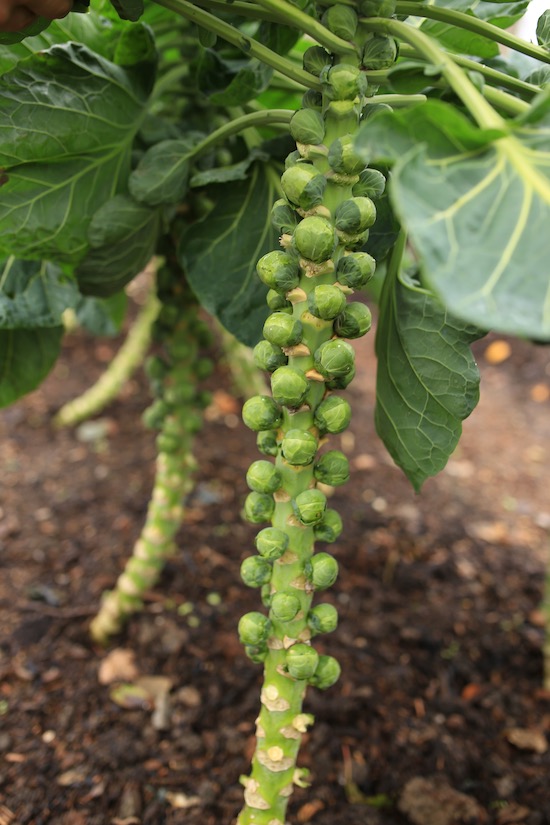
Root harvests
Before it turns too frosty and slugs plus disease get too involved, we pulled the last carrots in mid December. There was more roofly damage than I would’ve liked, despite having a mesh cover over them from early August until very recently. I think the flies must crawl under the sides of the mesh! However Oxhella is still gives plenty to eat because the carrots are so fat with damage mostly near the surface, also they are very dense and store well, as on left in the photo.
Some parsnips are still in the ground for harvest up till March, but here where the soil is quite dense, I suffer some canker on parsnips. In clay soils it’s probably worth harvesting all parsnips now, to store anywhere cool, with the soil or them still.
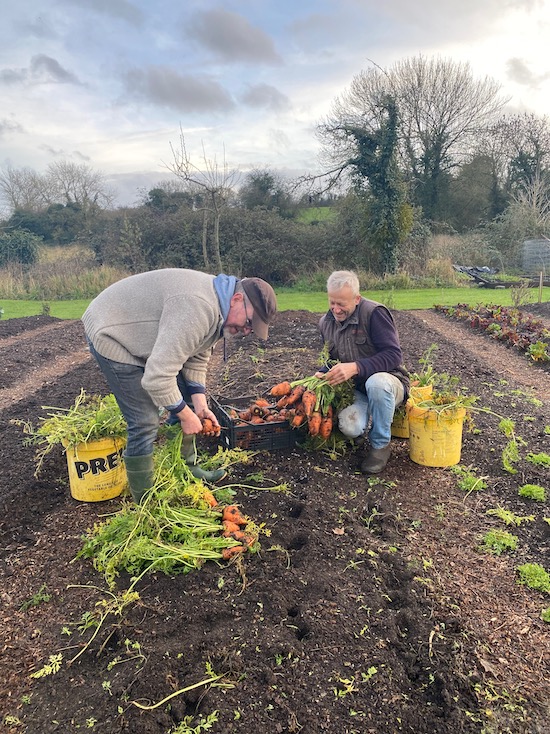
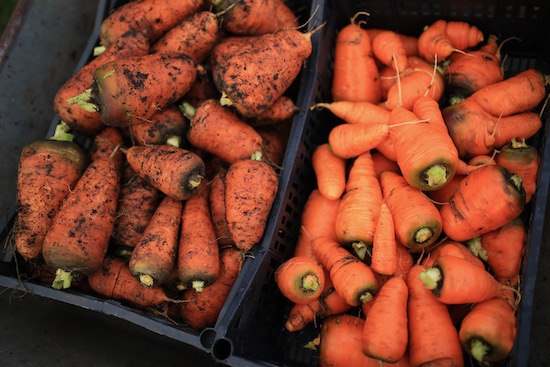

Leaf harvests at winter solstice
Orders for salad at Christmas are large, so I am always nervous about having enough to keep everybody happy. Once again we were helped by the weather being mild through most of the month, and a big addition to the harvest is leaves from radicchio hearts such as you can see on the table where we are eating. Harvest this year were good and they have kept well, 506TT mostly, plus I am forcing a few Verona for January picking.
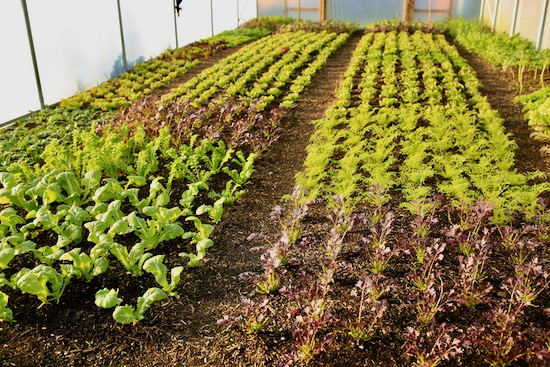
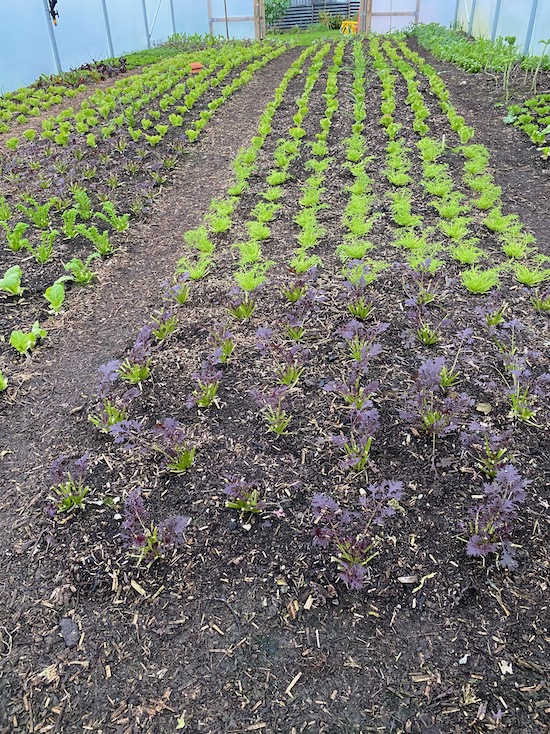
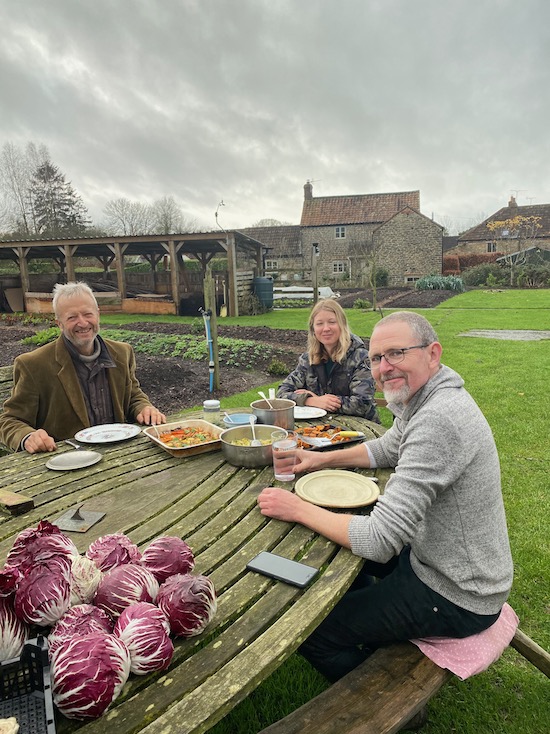
Seeds and module trays
For a year now I have been working with the Containerwise company, who make solid model trays of polypropylene. I have been impressed by the durability of the trays, while also feeling for a long time that there is a need for a tray with smaller cells, not too deep, and with a decent sized hole at the bottom. In the photos you see my CD 60 new design, and in this video. Minimum purchase is five at the moment.
My tray is the same overall size as Containerwise’s 40 L, but with 60 cells. Therefore you can fit 50% more plants into your propagation space.
Compared to the 40L, my trays’ smaller cell volume means you need less compost to fill a tray. Each cell has a volume of 21 cm³ compared to 70 cm³ for the 40 L. This fits alongside my recommendation to transplant small plants, which then get away very quickly. Rapid throughput and small cells mean you grow more plants in a smaller area, more quickly and using less compost.
When ready to transplant, plants push up easily, thanks to the 14mm hole size of each cell bottom. This improves drainage too. The polypropylene is smooth and helps plant rootballs to slide upwards. There is little or no damage to the plant roots, and none to the tray.
You can buy it here if in the UK. Containerwise ship to other countries, and also they are looking for an agent in north America. They have been slightly surprised by the strength of demand and are packing today as I write this, cutting short their Christmas holiday! The owners are lovely people, David Meek and his daughter Emma.
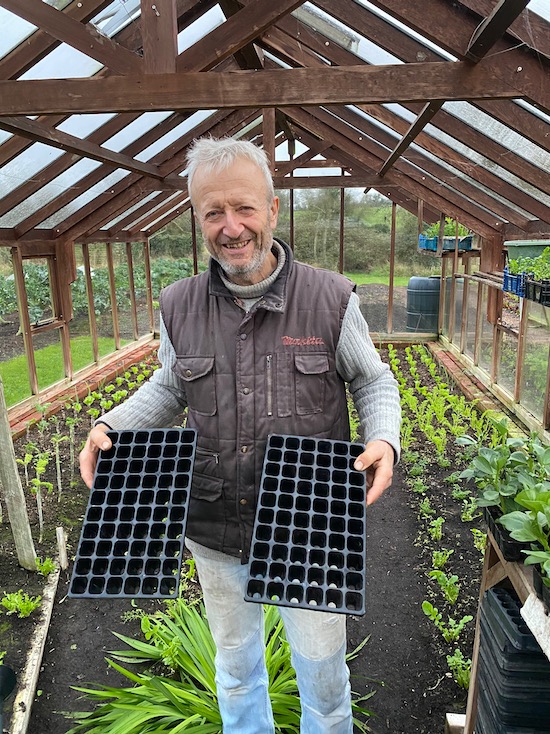
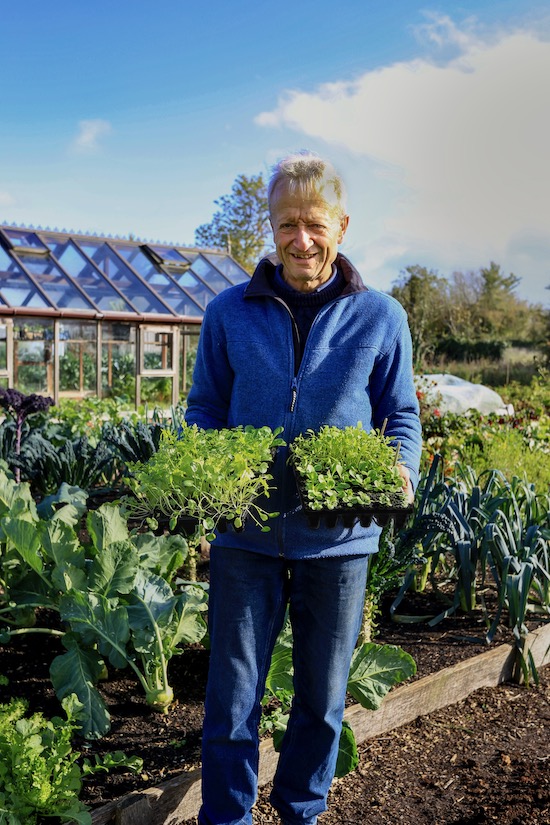

SPANISH CALENDAR! and video translations
Now available in the shop. This has been a big enough project to slightly discourage me from more translations. First we have to find and pay for a translator, then there is a lot of work to rejig the PDF at design stage, before then printing a certain number, which is smaller than the English version and therefore more expensive.
At the same time, we are investing in translations of subtitles for my videos, which you can find using the gear cog icon bottom right on the video screen. All of them now have Spanish . Plus we are investing in Portuguese, French, Italian, German, Arabic, Japanese, Chinese traditional and Russian. I am sorry if your language is not among these but there are limits. We simply can’t afford to translate into every language.
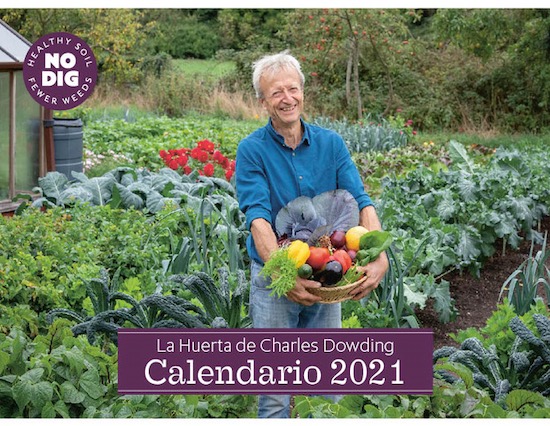
Small garden
Next week in the frost we shall make a video about the small garden, and these photos are to give you an idea of what is happening there at the moment. I am spreading compost whenever space is available, as well as under the cauliflower and between the kohlrabi example.
For £25 we are selling the module of my first online course which gives details of cropping both the small garden and one single bed, through two whole years. There are dates of showings and plantings, photographs to show them, tables of harvests and a video which is exclusive to the course.

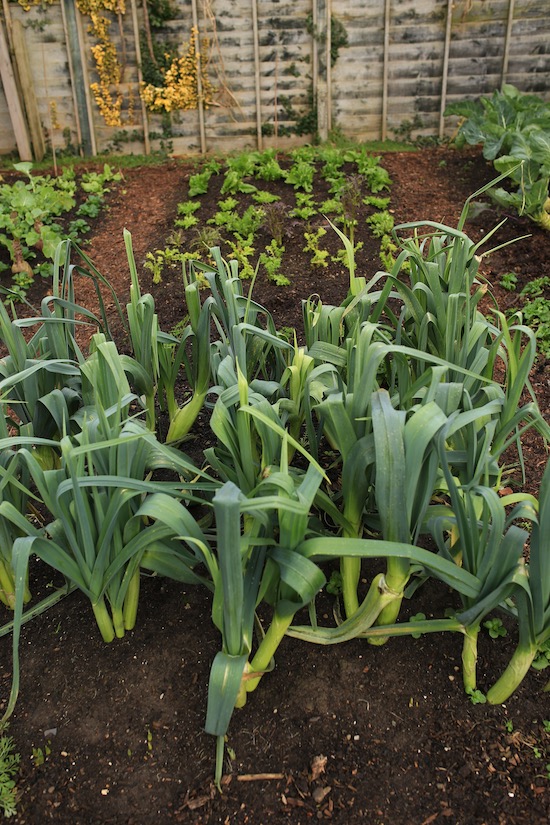
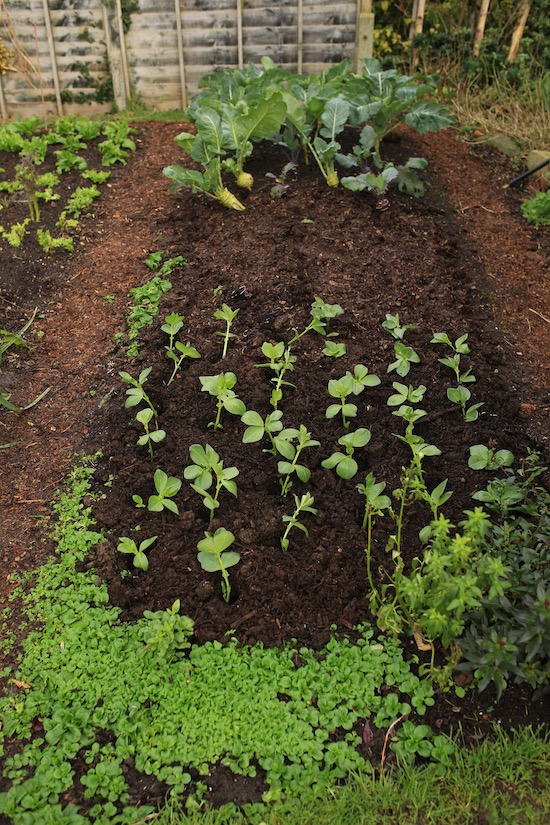








































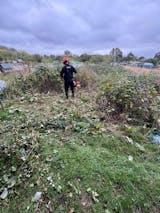
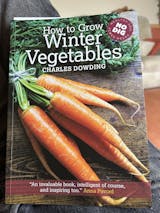


0 comments